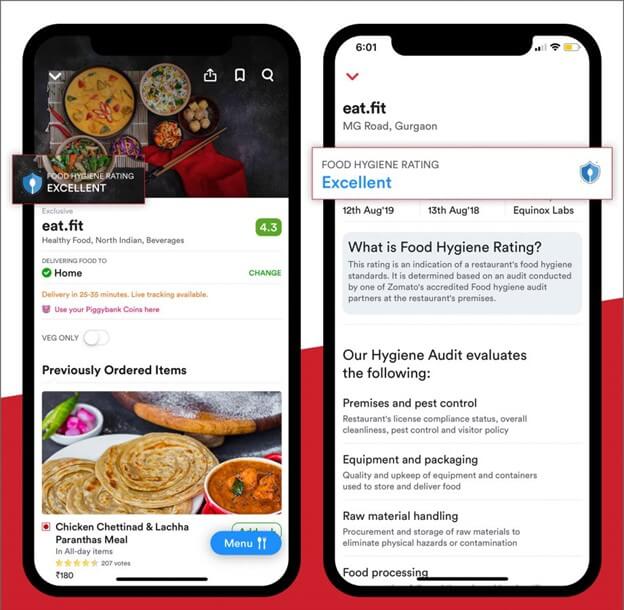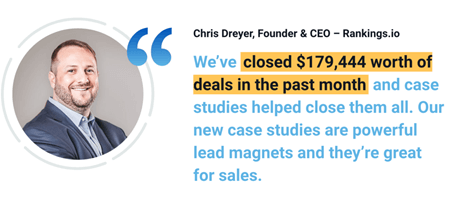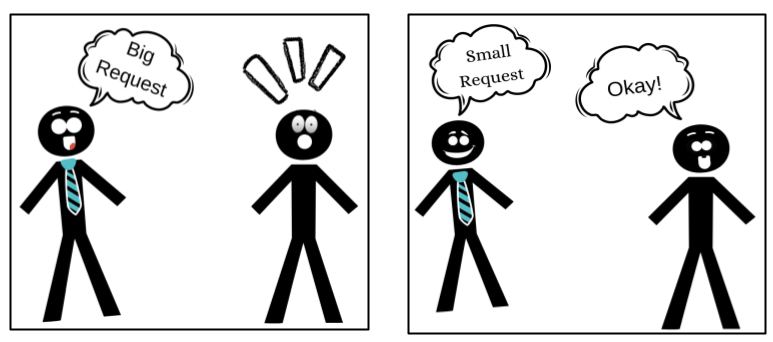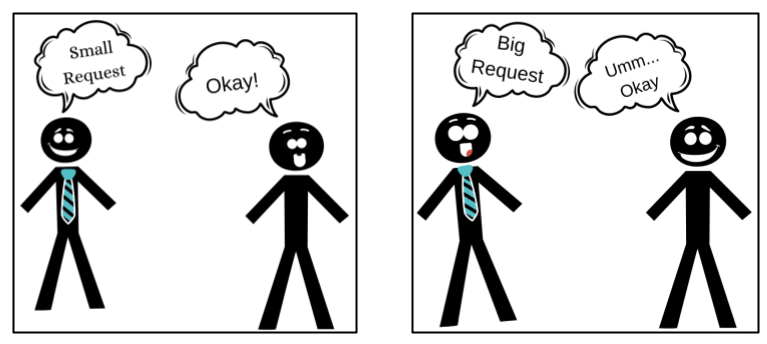We tend to change our perception, opinion, and behaviour to be consistent and identify with the group norms. Humans are social animals. We have an innate desire to belong to a group.
This occurs because we value this sense of belongingness so highly that the more the other people find an idea, trend or behaviour appealing, the more correct that idea becomes in our minds.
We perceive a certain behaviour as more correct when we see others doing it. The more people who do it, the more correct it becomes. Professor Hansen of Stanford Business School demonstrated this when he inflated downloads for bestselling files on the internet by personally downloading those files repeatedly so that the counter was artificially high. Later, he observed that these files were downloaded even more frequently. The high number on the counter indicated popularity and users were interested in downloading the files that were ranked the highest.
In this article we will explore some psychological principles that can be effectively employed to boost sales and marketing, like:
i)Social Validation
ii)Conformity
iii)Compliance
1.Social Validation
Imagine you are shopping for a new wardrobe for your room. You have shortlisted three products based on the photos of it alone. First product has over 500 reviews with a 4.8-star rating. The second product has 120 reviews with a 2-star rating. The third product has no reviews with 1 star rating. Which one would you buy?
Obviously, you would be drawn to the wardrobe with over 500 reviews given by satisfied customers.
Why does this occur? This is due to a psychological phenomenon known as Social Validation (Social Proof).
Social validation is a phenomenon where an individual tends to follow what other members of their social group recommend or dislike; people consciously and unconsciously look at the society for guidance and affirmation. This is also known as the Bandwagon Effect.
Simply put, it’s almost like a chain reaction, where people unconsciously follow what other members of the group are doing.

The implication is that since so many are doing it, it must be good, or at least acceptable. This phenomenon does not allow the people to examine their own personal values and beliefs.
Zomato and Swiggy are go-to apps for many individuals when considering where to have dinner, especially when they are in an unfamiliar place. Wonder why? This is because other users have socially validated highly rated restaurants, and socially invalidated low rated restaurants.

Social proof shapes our choices, actions, and behaviour. We want others to accept and like us, hence we subconsciously engage with what the crowd is doing. It can be manifested in submitting the work for an award, hoping for praises on a job well done, posting on social media handles like Facebook and Twitter and hoping to get as many likes and retweets as possible, and reviewing a resort on Google.
With the advent of social media, where users are just a click away from brands, making them more powerful than ever before, social media validation is now crucial for every business. Incorporating social validation in today’s world is vital because self-propagating strategies are less effective as they were once.
Users largely rely on and look for peer reviews and peer actions above any other means of justification. Creating social validation can sharply increase the trust users have in your brand, which would in turn make them more comfortable in doing business with you.
Some of the ways to manifest it are:
i)Case Studies
One of the ways to showcase satisfied users is by writing a case study about their experience with the products and services. This can be done by identifying one or several clients that you’ve had significant success with. The case study would deep dive into how the organization and the user have worked together.

ii)Testimonials, Rating, and Reviews
An average consumer reads 10 online reviews before purchasing; and 88% of them trust user reviews. Testimonials and reviews from satisfied customers are one of the strongest forms of social proof. These are universally applicable and can be very effective on a landing page or a paid monthly package. This principle has been leveraged by Amazon. In their review section, they publish different star-based ratings and testimonials for the visitor to see before any purchase. Customers can also publish specific comments and photos of their purchases which are more eye-catching and grab the user’s attention.

iii)Feedback
Taking feedback offers users an opportunity to provide their input on a particular service or a product. The users tend to feel engaged and connected when they are given the liberty to share their thoughts. It makes the user feel valued and an integral part of the decision-making process.


iv)Trust icons
One of the vital concepts that designers often overlook on their landing page is adding client logos, press mentions, investors, and icons. Adding brands that users trust and recognize may set the notion for “if they have utilised their services then it must be good”. This grabs the user’s attention and builds their trust in your product or services. According to research, trust icons on a company website can increase conversions by as much as 95%.
![]()
![]()
![]()
v)Building product awareness
Researches have indicated that social media has been a huge influence on consumers when buying a product. In fact, 85% of businesses use social media primarily for brand awareness and to increase their visibility.
A large section of your audience gets to know about your brand through the content that is distributed on social media. According to research, 68% of the businesses are actively utilizing it to win more clients. Facebook alone has 2.74 billion monthly active users, with a potential increase of 12% every year.
Conformity
Wonder why you listen to recommended albums on Spotify or watch videos with highest views on YouTube? We tend to follow the unstated norms that the group or the society holds. This phenomenon is known as conformity. Conformity is extremely powerful that prevents people from engaging in behaviours perceived to be against the norm, and it can promote individuals engaging in certain behaviours without much (or any) additional effort.

Conformity focuses on socially acceptable behaviours. The website design should highlight how the use of the product is in line with the social groups that potential users belong to.
Apple leverages this concept in iTunes applications when they display the top 100 songs that the users have downloaded. Users seeing those lists are likely to explore some of this music since they might think that people like them may find it enjoyable. iTunes also recommends music based on affinity analysis – based on what others who have made similar purchases have gone on to buy.

Social validation and conformity being an indirect way to influence consumers, has been extensively applied in sales and marketing There are also direct ways of influence: Compliance
Compliance
Your friend calls you up and informs you about a steal away deal that was just advertised in the newspaper:10% off on the membership of a neighbourhood gym with a personal trainer and a diet plan for 6 months for the first 5 customers who sign up. When you buy the membership, you demonstrate compliance.
According to Breckler, Olson, and Wiggins, Compliance refers to a change in behaviour that is requested by another person or group; the individual acted that way because others asked him or her to do so but it was possible to refuse or decline.
Compliance is about how you ask your users to do something. Marketers should ask the users to engage in a behaviour after they have created a good experience and given them an opportunity to use the product. People are more likely to comply after realising that they have interest in, will benefit from, and use your product.
Researchers have identified some specific compliance techniques that one could incorporate in the product’s experience:
i)Door-in-the-face
In this technique, the marketers begin by first asking for a large commitment to your product. When the user denies, the marketers make a smaller and more reasonable request.
For example, you could ask the users to purchase the full licensed version of your product after giving them a 10-day free trial. If the user does not agree, the marketer could either provide them with another 30 day trial with a discounted price or offer them a reduced price for a limited functionality version of the product.

ii)Foot-in-the-door
This is the opposite of door-in-the-face technique. In this approach, the marketer first makes and obtains a small commitment. Once the user has complied with it, the marketer follows up with a larger request over a period of time. The notion behind this is: once the user has complied with a small request, they are more likely to comply with a second, larger request.
For example, marketers could ask the users to review your product online. Following up with users who have reviewed and complied, marketers could ask the users to write a positive review about the product.

iii)The “That’s-not-all” technique
In this technique, the marketer first pitches the product or service at a particular price, followed by an additional offer before the potential purchaser has made a decision, the marketer says, “Wait, that’s not all!”. The marketer provides an additional incentive to the original offer to ‘sweeten the deal’.
For example, if the user requires three laptops, the marketer might throw in an extra laptop for free if the user buys the laptop in large quantities.

Summary
The power and art of social validation can be used in any persuasive situation. If your product or service is socially validated, users are most likely to use or switch to it. Users always look around and compare themselves with others. If they feel a discrepancy between themselves and others, they will most likely reduce the gap and conform to the group standards.
It is a reciprocal relationship where your services affect social validation from clients and the social validation impacts the positive or negative growth in your organization. Spending some time to create an overall positive experience for your clients will cultivate social validation.
Compliance involves users agreeing to do something because they are asked to do it. Utilising techniques like foot-in-the-door, door-in-the-face, and that’s not all, marketers could persuade users and increase sales.







